
How To Stop Hot Pepper Burn
Are hot pepper burns par for the course when handling chillies? They shouldn't be! There are many precautions you can take to prevent burns, but also plenty of remedies should you find yourself afflicted. Read on to find out everything you need to know about soothing burning caused by capsaicin oil.
We've all been there—we underestimated the spiciness of a chilli only to be met with an overwhelming burning sensation that engulfs the mouth, makes the eyes water, and the nose run. The minutes that pass during this time seem to last an eternity! However, hot pepper burn occurs not only when we eat them, but when handling them too!
So whether you're looking for some solutions should you experience pepper burn in the future, or are currently going through it, read on to find out everything you need to know to remedy this common plight.
What makes chillies hot?
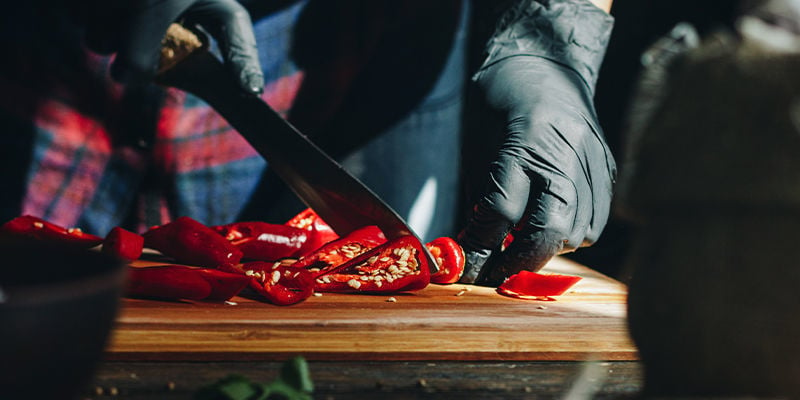
The heat in chillies is caused by a compound called capsaicin. This is a naturally occurring, odourless and colourless, oily chemical found chiefly in the pepper's placenta tissue—the white membrane surrounding the seeds.
In the wild, capsaicin acts as a natural defence against threats such as animals, or anything else that could ruin the dispersing of seeds. As a result, many animals actively avoid pepper plants. However, the same can't be said for humans, as the capsaicin content is a massive draw for spice enthusiasts. Another exception are birds—birds are biologically unable to feel the burn of capsaicin.
But how can we tell the difference between mild and hot varieties of peppers? Simple. With the help of the Scoville scale. This is a system created by American pharmacist Wilbur Scoville in 1912, and it is still used as the standard heat measurement for peppers to this very day. Although the system has changed to reflect more scientifically sound practices, the idea behind it is to determine how many droplets of sugar water it takes to thoroughly dilute the capsaicin present.
Peppers are then rated in Scoville heat units (SHU) in multiples of 100. For example, the bell pepper, which contains no spice, equates to 0 SHU on the scale, whereas Carolina Reaper can contain up to 2,200,000 SHU, making it the hottest pepper available in the world right now.
How to protect yourself when working with hot peppers
Whether you're an avid pepper grower or just picked up a packet from your local store, it's important to protect yourself when handling chillies. It might sound like overkill, but capsaicin oil can linger on the hands, and doesn't come off particularly easily with just soap and water, meaning any trips to the bathroom after handling chillies might come with some dangers!
To prevent this, it's best to use latex gloves when handling and preparing peppers. However, if you don't have any gloves to hand, you can always rub your hands in vegetable or olive oil. This will provide a protective layer while handling your peppers. It's also vital to work in a well-ventilated area. While this is obvious in the case of chilli powders, it will also stop any inhalation of capsaicin fumes from the fruits themselves. It's always best to err on the side of caution when it comes to handling hot peppers.
How to stop hot pepper burn on the skin?
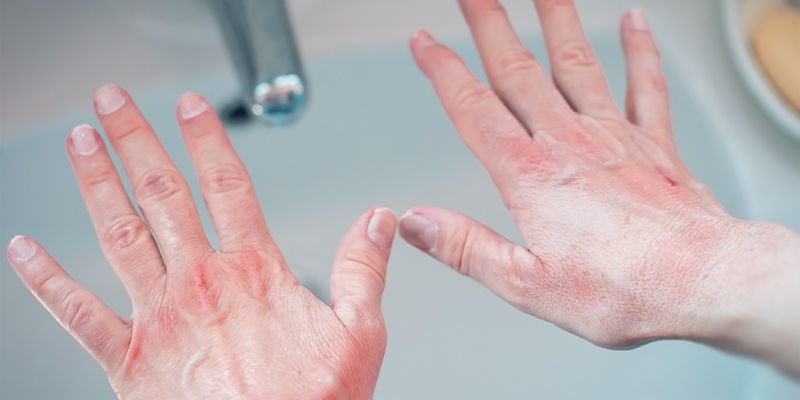
The potent oil released when cutting or handling chilli peppers can cause a burning sensation on the skin. This can be very mild and result in minor irritation, but it can also lead to a more severe sensation. So, what do you do if your skin is exposed to capsaicin? As mentioned, soap and water will only go so far, so here are some remedies that will help you with any pepper-induced skin burns.
Dairy products
You might feel a bit foolish doing this, but rubbing dairy products such as milk, yoghurt, or sour cream on a pepper burn will significantly diminish the pain. The use of dairy products isn't just down to luck or some black magic; they contain a fat-binding protein known as casein, which can dissolve the capsaicin oil and remove any burning sensation with ease.
Baking soda
Baking soda is useful not only in baked goods, but also around the house. With uses spanning from removing carpet stains to polishing silverware, it should come as no surprise that baking soda is a go-to when hot pepper burns make an appearance. Much like dairy products, baking soda has the power to neutralise the burn of the oil. Add a little water to create a thick paste, then apply to the affected areas for instant relief.
Vinegar
Another household mainstay, vinegar, contains acetic acid, which is perfect for diminishing the capsaicin. You can pour it directly onto the afflicted area, or create a vinegar/water mix and soak your hands for roughly 15 minutes. This will ensure all remaining oil has been dissolved. Perfect for putting on your fries, as well as your hot pepper burns—maybe just not at the same time!
Degreasing cleaners
A degreasing cleaner such as dish soap should be effective against hot pepper burns. As dish soap is formulated to deal with leftover oils and grease from dishes, it's helpful for burn relief as well. The same goes for degreasing hand cleaners that mechanics use; these will effortlessly remove any lasting sting.
High-proof ethyl alcohol
As a last resort, you can look to use high-proof ethyl alcohol. Since capsaicin is alcohol-soluble, a gentle rub with a high-proof solution should remove it effectively.
What to do when you have hot pepper burn in your eyes?
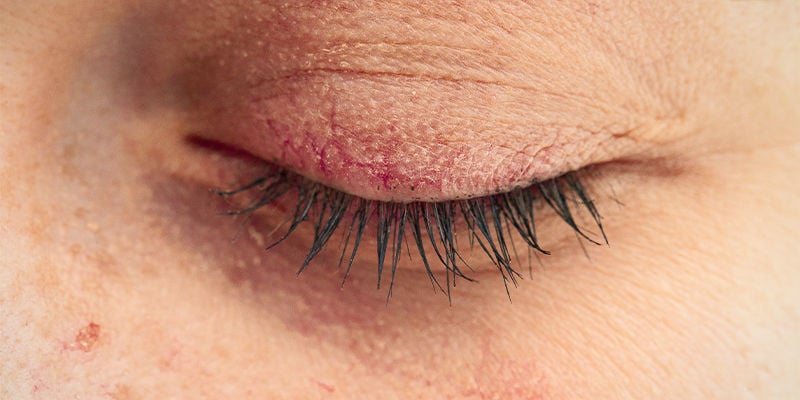
Alongside wearing gloves, face protection such as goggles are paramount when handling and cutting chillies, as one spray of oil into the eyes will be a very uncomfortable experience. Resulting in streaming eyes, intense pain, and disorientation, it's a problem that needs to be dealt with immediately to avoid lasting damage. There's a reason police use pepper spray to restrain suspects—don't accidentally give yourself the same treatment by being careless with capsaicin.
Blink your eyes
This will probably be a gut reaction in most people who encounter such a scenario, but blinking causes the release of tears, which can provide relief from the burning and flush out any remaining oil from the eyes.
Remove your contact lenses
If you're wearing contact lenses and end up with some capsaicin oil in your eye, you'll need to take them out as quickly as possible. Be sure to quickly (but thoroughly) clean your hands, and then remove the lenses. As contact lenses can't be cleared of the oil while being worn, it's best to get them out ASAP.
Flush with saline solution
Last but by no means least, use a saline solution (0.9%, like tear fluid) to clean out your eye(s). The influx of liquid will be enough to wash out any lasting remnants of capsaicin and stop further pain. Continue blinking after using the solution to ensure the eye is clear.
What if you have hot pepper burn in your mouth?
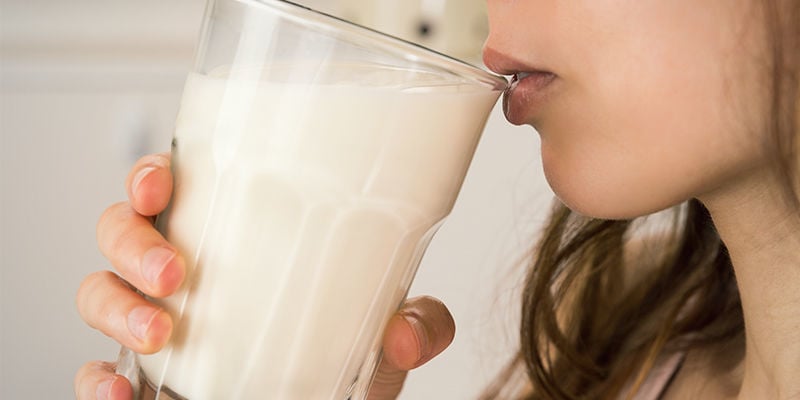
Arguably the most common hot pepper burn scenario is that which affects the mouth. The mouth is a sensitive area that can easily become the epicentre of a spicy pepper problem. To start, it's worth noting that drinking water to quell the heat simply won't work. As capsaicin is oil-based, water will only serve to spread the oil even more. The same goes for low-proof alcohol like beer and wine; they are likely to cause more issues than they solve. Unless you want to knock back several shots of liquor, you’re better off using one of the suggestions below.
Dairy
As with placing dairy on the skin, these products can help to relieve hot pepper burn in the mouth. So if you're feeling the heat, reach for a glass of milk, sour cream, yoghurt, or high-fat cheese, and get them in your mouth as quickly as possible. Haven't you always wondered why spicy Indian and Mexican dishes usually have a dab of sour cream or yoghurt on top? It's for this very reason!
Acidic drinks
Although we don't advise drinking vinegar, the premise is the same for acidic drinks. The acid will act to calm any burn, as well as wash away any remaining capsaicin oil. So next time you're in a heated situation, take a swig of tomato, grapefruit, or lemon juice, or take a bite of some lemon, or lime.
Carbs
Some relief can be found in starchy carbs. The principle here is eating enough carbs to create a barrier between the capsaicin and the sensitive areas of your mouth. So eating bread, rice, or potatoes are some good go-tos that will help alleviate the burning.
Take care with your capsaicin
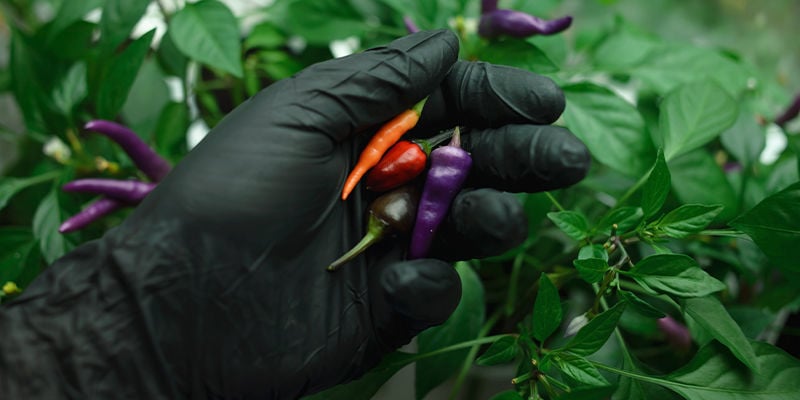
As we've touched upon numerous times, it's crucial to treat your chillies with respect and due care. You might feel a little silly wearing gloves and goggles to prepare food, but believe us when we say you'll be saving yourself a lot of trouble. So take care with your capsaicin, and you'll be enjoying spicy dishes in next to no time. All prepared safely, of course.
-
 4 min
16 May 2022
How To Store Chilies And Peppers (Short And Long Term)
There's no doubt about it; cultivating pepper and chili plants is a hugely rewarding experience. But it's the harvest we really do it for. Having a supply of great-tasting and spicy chilies at your...
4 min
16 May 2022
How To Store Chilies And Peppers (Short And Long Term)
There's no doubt about it; cultivating pepper and chili plants is a hugely rewarding experience. But it's the harvest we really do it for. Having a supply of great-tasting and spicy chilies at your...
-
 4 min
1 April 2022
How To Grow Cayenne Long Slim Peppers
Here we look into how to grow cayenne long slim chilli peppers, the best ways to tend to them and keep them healthy, and what to do with them after harvest.
4 min
1 April 2022
How To Grow Cayenne Long Slim Peppers
Here we look into how to grow cayenne long slim chilli peppers, the best ways to tend to them and keep them healthy, and what to do with them after harvest.
-
 6 min
24 September 2021
Ghost Pepper (Bhut Jolokia): How To Grow And Use
Ready to put your spice limit to the test? The ghost pepper is synonymous with massive heat, but it also has some big flavours to showcase too. If you've ever wanted to cultivate these chili...
6 min
24 September 2021
Ghost Pepper (Bhut Jolokia): How To Grow And Use
Ready to put your spice limit to the test? The ghost pepper is synonymous with massive heat, but it also has some big flavours to showcase too. If you've ever wanted to cultivate these chili...





 United States
United States











